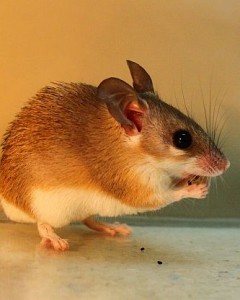Technion Researchers Discover How the Defensive Chemicals of a Fruit Turn a Seed Predator into a Quality Seed Disperser
According to the directed deterrence hypothesis, defensive chemicals (secondary metabolites) in ripe fruits deter seed predators, but have no or little effect on seed dispersers. Indeed, there is some evidence that birds (seed dispersers) and mammals (seed predators) differ in their responses to defensive chemicals. However, this mechanism was only demonstrated based on differences at the class level, namely differences in vanilloid receptors found in mammals but not in birds.
“Here we present the findings of physiological and behavioral experiments demonstrating the use of defensive chemicals of the mustard oil bomb to encourage broad-range, class-independent (e.g. mammals vs. birds) seed dispersal in sweet mignonette fruits, in order to force a behavioral change at an ecological timescale, converting rodents from seed predators to seed dispersers”. Says researcher Michal Samuni-Blank, who has researched the subject under the guidance of Profs. Zeev Arad of the Technion and Ido Izhaki of Haifa University. “This change is achieved through the unique compartmentalization of the mustard oil bomb, which causes activation of the system only upon seed and pulp co-consumption. This ‘motivates’ seed dispersal which has led to the first ever documentation of a rodent dispersing seeds via seed spitting”. The research findings demonstrate the power of fruits defensive chemicals to shift the animal-plant relationships from predation to mutualism, and provide support for the directed deterrence hypothesis at the intraspecific level, in addition to the interspecific level.
A spiny mouse from Israel is shown spitting seeds from the desert shrub Ochradenus baccatus into its paws and onto the ground as it eats the berries. If the seeds are chewed simultaneously with the berry pulp, toxic chemicals are released. So the plant has made a normally seed-eating mouse become a seed-spitter that spreads the plant’s seeds, helping it reproduce, says a new study from Technion-Israel Institute of Technology, University of Haifa, University of Utah, and University of Wisconsin, Madison.
Photo Credit: Michal Samuni-Blank, Technion-Israel Institute of Technology


